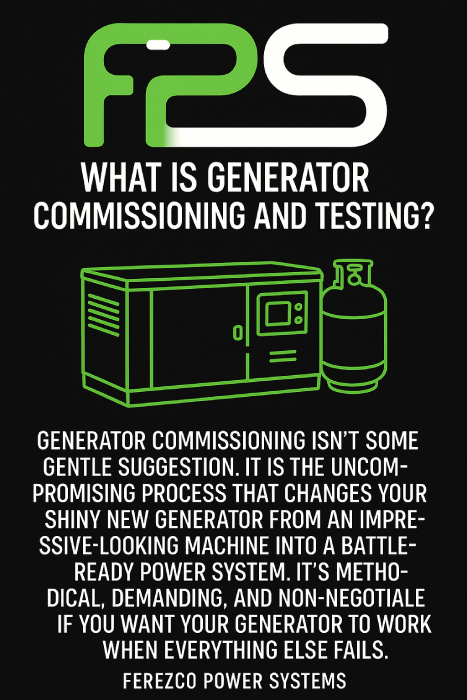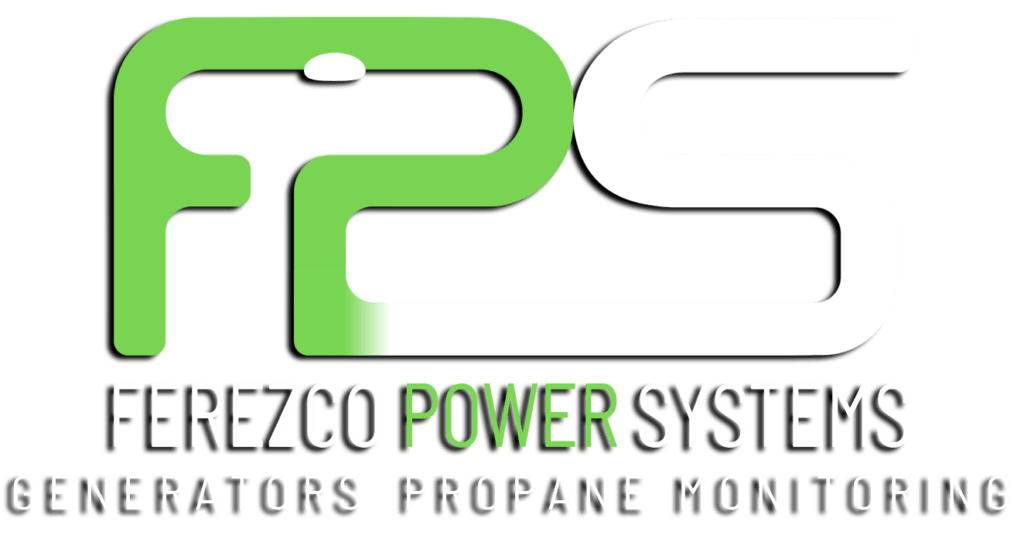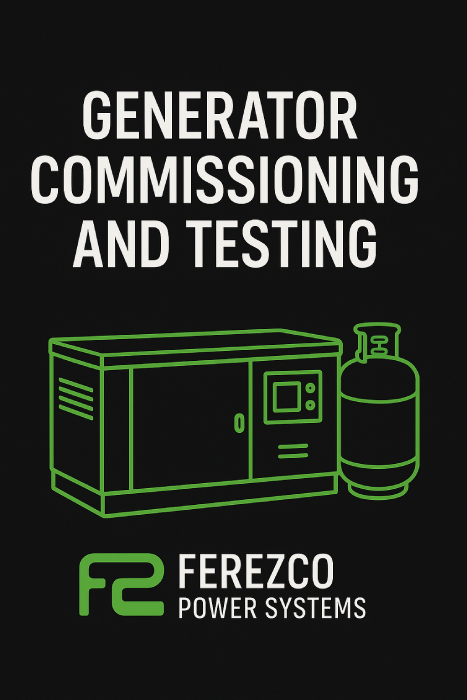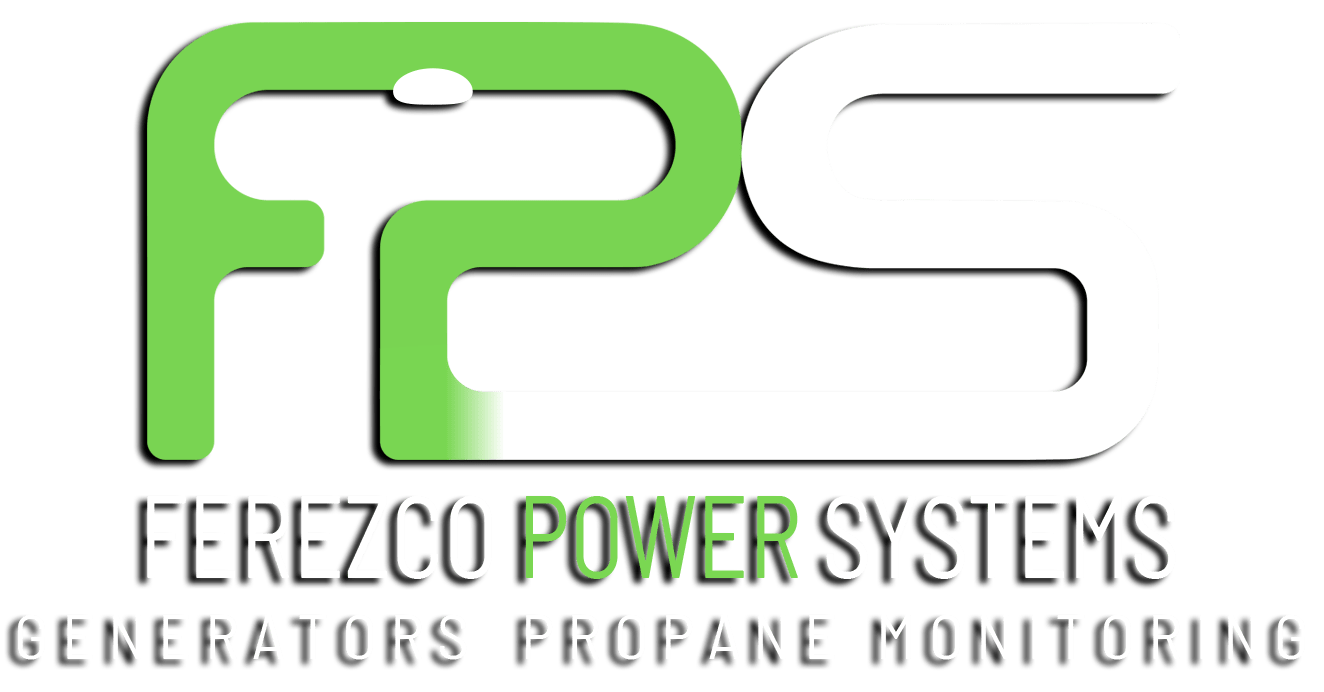When the grid goes dark and every switch flips uselessly, your generator isn’t just equipment, it’s your lifeline in the dark. But here’s the truth: installation without proper generator commissioning and testing is like buying a parachute without checking if it opens.
For anyone who is serious about backup power, whether you’re protecting a family home or a mission-critical data center, commissioning isn’t just some optional paperwork. It is the make-or-break difference between a system that starts when you are in the middle of an outage.
The hard numbers don’t lie: The Power Reliability Council’s latest findings show 42% of backup power failures happen because people don’t pay attention to commissioning. Not a technical glitch, but human negligence.
This blog will tell you what you need to know about the Generator Commissioning and Testing Checklist that separates professionals from amateurs.
What Is Generator Commissioning and Testing?

Generator Commissioning isn’t some gentle suggestion. It is the uncompromising process that changes your shiny new generator from an impressive-looking machine into a battle-ready power system. It’s methodical, demanding, and non-negotiable if you want your generator to work when everything else fails.
The testing phase is where rubber meets the road. We’re talking about pushing your system to its limits before nature or accidents do it for you. This means running load tests that stress-test every part, simulating outages that force transfer switches to perform and create worst-case scenarios to expose any weaknesses while technicians are still on site, not during an emergency.
The 2025 NETA standards have raised the bar even higher, where you need cybersecurity verification for networked generators after multiple incidents where hackers remotely disable power systems during grid outages.
When done right, commissioning ensures:
- Your generator doesn’t just start; it performs under pressure.
- Your fuel system delivers consistently without pressure drops or contamination issues.
- Your transfer switch activates in milliseconds, not seconds (that gap matters for sensitive equipment)
- Your control systems respond correctly to every input, not just the common ones.
- Your cooling system can handle extended runtime in summer heat (where most failures happen)
- Your emissions meet the stringent 2025 EPA Tier 5 requirements
A proper generator commissioning and testing checklist doesn’t just tick boxes, it creates your power system’s performance fingerprint. These baseline readings become your diagnostic gold standard for generator’s entire life. So, when something drifts later, you’ll know exactly what changed and why.
Related: Home Generator Installation Process: What You Need To Know
Generator Commissioning and Testing Checklist
Regardless of generator type, thorough commissioning and testing are important. This is a checklist that should be completed by qualified personnel.
| Commissioning Phase | Critical Testing Elements | Acceptance Criteria |
| Pre-Startup Verification |
|
|
| Initial No-Load Testing |
|
|
| Load Testing |
|
|
| Transfer Switch Testing |
|
|
| Safety Systems Validation |
|
|
| Control System Verification |
|
|
| Final Document |
|
|
Related: 6 Best Generators for Home in 2025 to Keep the Lights On During Outages
Advanced Generator Commissioning Considerations for 2025
As generator technology has evolved, commissioning processes have become better. In 2025, professional generator commissioning and testing should include these advanced elements:
Harmonic Analysis
Modern electronic equipment can be sensitive to power quality issues. Advanced commissioning should include:
- Measurement of total harmonic distortion (THD)
- Verification that voltage harmonics remain below 5%
- Testing with non-linear loads like computers and LED lighting
- Confirmation that sensitive electronics operate properly on generator power.
Load Shedding Verification
For systems with automatic load management:
- Test the sequential addition of loads.
- Verify proper shedding of non-essential circuits when approaching capacity.
- Confirm priority loads maintain power under all conditions.
- Test the system’s response to sudden large loads.
Paralleling Operation (If Necessary)
For multi-generator systems:
- Verify synchronisation parameters
- Test load sharing between units
- Confirm smooth transition during units coming online/offline
- Validate repetitive features
Fuel Consumption Analysis
The baseline fuel efficiency:
- Measure consumption rates at various load levels
- Compared to the manufacturer’s specifications
- Calculate the expected runtime on the available fuel supply
- Know the best loading for efficiency
Advanced Controls Testing
Modern generators have smooth control systems:
- Test remote monitoring and control capabilities
- Check connectivity with home automation systems
- Confirm proper operation of predictive maintenance features
- Validate cybersecurity protections
Necessary Maintenance Following Commissioning
After successful generator commissioning and testing, apply these maintenance practices to ensure continued reliability:
Regular Exercise Schedule
- Weekly no-load exercise for 10-15 minutes
- Monthly load testing (minimum 30% capacity)
- Quarterly full-load testing for 1-2 hours
- Annual load bank testing to verify full capacity
Preventive Maintenance Timeline
Monthly Checks:
- Inspect for leaks, damage, or debris
- Check fluid levels
- Verify battery condition
- Test the automatic start function
Semi-Annual Service:
- Change oil and filters
- Clean air intake parts
- Inspect the fuel system
- Check electrical connections
Annual Comprehensive Service:
- Complete load bank testing
- Professional inspection of all systems
- Replacement of wear parts
- Recalibration of controls if needed
Documentation and Record-Keeping
Maintain detailed records of:
- All commissioning test results
- Maintenance activities performed
- Any issues encountered and resolutions
- Fuel consumption and performance data
- Service provider contact information
Safety Considerations for Generator Operation
Even with proper commissioning, ongoing safety practices are important:
Carbon Monoxide Protection
- Install CO detectors in all sleeping areas
- Never operate generators in enclosed or partially enclosed spaces
- Position portable generators at least 20 feet from openings
- Consider generators with built-in CO shutoff features
Electrical Safety
- Prevent backfeeding with proper transfer equipment
- Use GFCI protection for outdoor connections
- Keep connections dry and protected from the weather
- Follow all NEC requirements for wiring and grounding
Fire Prevention
- Maintain clearance around generators (minimum 3 feet)
- Store fuel properly in approved containers
- Allow the generator to cool before refuelling
- Keep fire extinguishers rated for electrical and fuel fires nearby
Conclusion
The reliability of your backup system depends directly on the quality of its installation and commissioning. By following the detailed generator commissioning and testing process outlined in this blog, you can make sure that your investment will work as you expect it to.
Remember that generator commissioning and testing are not just a one-time event but rather the base of a good backup power system. Regular maintenance, periodic retesting, and proper operation will extend the life of your generator and guarantee its performance during emergencies.
Whether you’ve chosen a standby generator, portable system, or solar battery backup, professional installation and thorough commissioning provide the peace of mind that comes from knowing you’re prepared for whatever comes your way.
Related: How to Install a Manual Transfer Switch for a Backup Generator in 15 Steps




